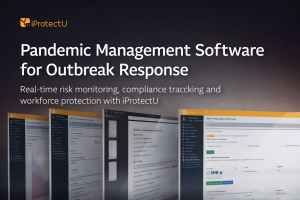Overview
Asbestos, once widely used in construction materials due to its insulating and fire-resistant properties, is now recognised as a serious health hazard. Furthermore, despite being banned almost 25 years ago, it is estimated that asbestos is still present in up to 1.5 million buildings across the UK.
Asbestos-related diseases claim the lives of around 5,000 people every year in the UK. This material is the greatest cause of work-related deaths, according to the Health and Safety Executive (HSE). When asbestos is disturbed, invisible fibres are released which, when inhaled, can cause incurable diseases such as mesothelioma to develop decades later.
A survey of 500 tradespeople conducted in September 2024, found that 49 per cent of respondents felt that asbestos was a problem associated with the past.
A further 50 per cent said that asbestos had become less of a concern the longer they had worked in their trades.
Shockingly, 26 per cent of respondents reported that they had not followed the correct procedures to remove asbestos when they discovered it.
Factors that may contribute to Complacency
Time since the ban: The asbestos ban in the UK came about in 1999, so younger tradespeople may not have experienced the widespread use of the ban and perhaps underestimate the risk.
Absence of awareness: Some workers may not fully understand the dangers of asbestos exposure, the types of materials that contain it, or the long latency period between exposure and disease development. Comprehensive training is vital.
Pressure to complete work quickly: Time constraints and financial pressures may lead to workers taking shortcuts and disregarding safety protocols.
Perception of low risk: Tradespeople may believe that the risk of asbestos exposure is low, especially if they are not working in older buildings or industries known for asbestos use. They may believe in outdated information and misconceptions about asbestos safety, for example, that only certain types are harmful.

Employer Responsibilities regarding Asbestos Exposure
Employers have a legal obligation to protect their workers from exposure to asbestos in the workplace.
Key legal requirements:
Maintaining an accurate and up-to-date asbestos register of all ACMs present in the workplace.
Conducting regular risk assessments to identify potential exposure risks and implement control measures. Check out the iProtectU Risk Assessment Software.
Implementing appropriate control measures to minimise exposure, such as safe removal of ACMs when necessary; encapsulation/sealing ACMs to prevent fiber release and enclosure/isolating ACMs to limit access.
Providing adequate training to workers on the risks of asbestos exposure, safe work practices, and emergency procedures. Check out the iProtectU Learning and Development Software.
Monitoring air quality to assess exposure levels and identify potential issues.
Properly disposing of asbestos waste in accordance with the relevant regulations.
Ensuring workers have access to and use appropriate Personal Protective Equipment (PPE), such as respirators, coveralls, and gloves. Check out the iProtectU PPE Management Software.
Consequences of Non-Compliance
Employers may be held liable for personal injury claims brought by workers who have suffered from asbestos-related diseases. In cases of gross negligence or willful disregard for safety, employers may face criminal charges. Regulatory bodies may take enforcement action, such as issuing fines or stopping work activities.
Employers must keep taking asbestos seriously and choose to prioritise worker safety every day
Employers can prevent complacency by regularly reviewing and updating asbestos management plans, ensuring compliance with all relevant regulations, and providing training and awareness programmes for employees.








